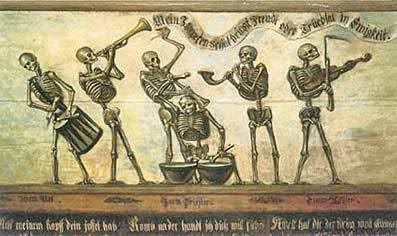If you are using Chrome, click the red hand button at the top right of the screen:

Then select: Don't run on pages on this site
If you do it correctly, the red hand will turn to green and you will no longer see this message.


Attempt to translate from Lucian Blaga "Eu nu strivesc corola de minuni a lumii" a great poem who recommends us the so called "Luciferian path", opposed to the "Heavenly path" of knowledge.
There are a few words almost impossible to translate, like : taina(mistery, charm, magic, arcanum), ne-nteles (un-comprehensible, which can not be understood rationally), zare(horizon, sheen, sky line).Many of these words are in fact philosophical concepts disguised as metaphors.
This is a pleading for mystery and I hope you will like it.
I Don`t Crush The Corolla Of The Wonders Of The World
by Lucian Blaga
"I do not crush the corolla of wonders of the world
and do not kill
with the mind the mysteries I meet
in my way
in flowers, in the eyes, on lips or graves.
The light of others
strangles the charm of the impenetrable hidden
in depths of darkness,
but I,
I with my light increase the magic of the world -
and just like the moon with her pale rays
doesn`t make smaller, but shivering
enlarges even more the arcanum of the night,
I too make bigger the darkened sheen
with large shivers of sacred mystery
and all that can`t be understood
changes to even bigger mysteries
under my eyes
because I love
the flowers and the eyes, and lips, and graves."
Before all the wondrous shows of the widespread space around him, what living, sentient thing loves not the all-joyous light -- with its colors, its rays and undulations, its gentle omnipresence in the form of the wakening Day? The giant-world of the unresting constellations inhales it as the innermost soul of life, and floats dancing in its blue flood -- the sparkling, ever-tranquil stone, the thoughtful, imbibing plant, and the wild, burning multiform beast inhales it -- but more than all, the lordly stranger with the sense-filled eyes, the swaying walk, and the sweetly closed, melodious lips. Like a king over earthly nature, it rouses every force to countless transformations, binds and unbinds innumerable alliances, hangs its heavenly form around every earthly substance. -- Its presence alone reveals the marvelous splendor of the kingdoms of the world.
Aside I turn to the holy, unspeakable, mysterious Night. Afar lies the world -- sunk in a deep grave -- waste and lonely is its place. In the chords of the bosom blows a deep sadness. I am ready to sink away in drops of dew, and mingle with the ashes. -- The distances of memory, the wishes of youth, the dreams of childhood, the brief joys and vain hopes of a whole long life, arise in gray garments, like an evening vapor after the sunset. In other regions the light has pitched its joyous tents. What if it should never return to its children, who wait for it with the faith of innocence?
What springs up all at once so sweetly boding in my heart, and stills the soft air of sadness? Dost thou also take a pleasure in us, dark Night? What holdest thou under thy mantle, that with hidden power affects my soul? Precious balm drips from thy hand out of its bundle of poppies. Thou upliftest the heavy-laden wings of the soul. Darkly and inexpressibly are we moved -- joy-startled, I see a grave face that, tender and worshipful, inclines toward me, and, amid manifold entangled locks, reveals the youthful loveliness of the Mother. How poor and childish a thing seems to me now the Light -- how joyous and welcome the departure of the day -- because the Night turns away from thee thy servants, you now strew in the gulfs of space those flashing globes, to proclaim thy omnipotence -- thy return -- in seasons of thy absence. More heavenly than those glittering stars we hold the eternal eyes which the Night hath opened within us. Farther they see than the palest of those countless hosts -- needing no aid from the light, they penetrate the depths of a loving soul -- that fills a loftier region with bliss ineffable. Glory to the queen of the world, to the great prophet of the holier worlds, to the guardian of blissful love -- she sends thee to me -- thou tenderly beloved -- the gracious sun of the Night, -- now am I awake -- for now am I thine and mine -- thou hast made me know the Night -- made of me a man -- consume with spirit-fire my body, that I, turned to finer air, may mingle more closely with thee, and then our bridal night endure forever.
Teanslated from German by George MacDonald himself
Funny!
Cinnamon was not on my friends list.
Hmmm! Odd!
Added her!
:P
COMMENTS
COMMENTS
-
Isis101
14:49 Aug 29 2011
Very interesting journal entry...I thought that many who had the strange illness with the dancing were those who ate contaminated bread...?
In any case, I guess a mental disturbance could trigger dancing, among other activities as well.
I love the clip from the 1979 version of 'Nosferatu' (I have it on DVD). Those people were feasting and dancing one last time, as they knew that they'd die soon...seems like a good way to go!
Dragonrouge
09:37 Sep 09 2011
So true!
Maybe there is no single explanation fr the phenomenon, maybe there are more then one... in any case, the lack of hope and the closeness of a sudden invisible death, gave those people a strange mental state that made that possible.